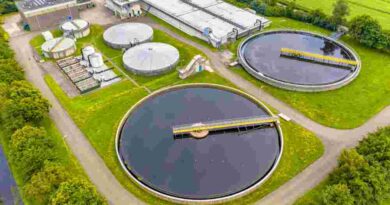A Year On, Cape Town’s New Reality. 5 lessons from the Water Crisis
April 12 last year was supposed to be D day when the South African city of Cape Town would officially switch to rationing of water. 50 litres per day. It dodged the bullet last year, and this year is even better. So what are the lessons from the Cape Town experience?
 Value it, Prize It
Value it, Prize It
It’s tough to cover a story that has been well told, but Cape Town, continues to offer more and more on what to do. The South African city, which captured attention last year as it seemingly hurtled to an apocalyptic water crisis, not only avoided the d-day warning of strict water rationing, but appears to have discovered a path to recovery too. Though it is not out of the woods yet, with dam levels still below pre-drought levels, at 50% of capacity.
Thus, the water crisis is not going anywhere away. For Cape Town, or anywhere else. It will always be lurking around, and for India particularly, the tussle between rural/urban, agriculture versus industry and many more sub plots will need to be managed, to avoid unrest, a hit on growth and worse. A single poor monsoon is probably all it will take to make it a full blown crisis for us too.
Fully 85% of industries depend on water, one way or another. On the other hand, over 85% of our water is used by agriculture. Keep those numbers in perspective, as we look at the lessons from cape Town that we need to replicate, now.
- Transparency and communication. One of the biggest changes the administration made in Cape Town, was to communicate a lot more, with regular updates on the situation for all. Thus , from weekly bulletins on the water level in the main dam supplying the city, to details on consumption. Drivers on freeways saw messages reminding them days remaining to D-day in fact. The very fact that D -day was announced 90 days in advance went some way in giving fair warning, and also driving home the urgency of the situation. A lot of people could have called it panic mongering, but in retrospect, it worked. Corporates took up the challenge too, reminding employees to conserve water. Messages like ‘If its yellow, let it mellow’ became common at heavily used restrooms, to conserve water used for flushing. Even a ‘dirty shirt’ competition ran to see who could make their cloths last without needing a wash. Let’s hope, it won’t come to that in India’s hot and humid summers!
- Strong measures: One of the biggest and politically brave measures taken was to take farmers on board as water allocations for agriculture were cut back. Not only did farmers support it, they even agreed to allow diversion of water stored for agriculture to the city. These are not easy moves to make, especially in India where farming remains the main profession of the population. But pricing in efficiency, be it in terms of water use itself, or even the crops specific regions should be growing, has to be a part of the solution, and not a problem. Poor compliance of laws on rainwater harvesting needs to change, with much heavier fines and action. Frankly, rainwater harvesting today is probably as critical an infrastructure requirement as roads, and needs to be treated as such. It’s potential impact is no less.
- Realistic pricing: Water pricing has always been a contentious issue in large parts of the world, and remains one in India too. For too long has it been treated like an unending natural resource, with no thoughts to pricing it like any other critical resource. The wastage, and abuse it has engendered of our water sources is mind boggling. Not only are we the world no. 1 in groundwater extraction, but we are also the fastest country on course to deplete our groundwater to irreplaceable levels. Yes, that means we are a year or two away from pushing down groundwater to levels where it will never really recover to ‘normal’ levels. This has already played out in regions like the NCR region, or in regions surrounding cities like Chennai and Coimbatore. Water pricing has to be introduced, and rationalised, for consumers and industry alike. Political will is all important here, as over 50% of supply is not even metered in urban India.
- Plug leakages and wastage: Linked to the above is the investment needed to overhaul the distribution and storage systems. In city after city, water lost in distribution is estimated at between 10 to 50%. Those are ridiculous numbers, and need to be brought down to a more acceptable level as fast as possible. Coupled to that is the clampdown on wastage of potable water, frequently used in swimming pools, to golf courses and worse. Cape Town banned the use of municipal water for any such use, and that itself led to a 10% drop in consumption.
- Recycle, Recycle, Recycle: Every trick in the book has been publicised, and used, to recycle water. From recycling grey water for public greens, to simply taking faster showers, to many other such tactics, the methods contributed immensely to making people realise that this was a crisis affecting everyone equally, and focus on the end, to conserve water use.
Cape Town, even one year after the crisis, is consuming 40% less water than it was, at its peak. That’s a tough act to follow for cities in India, already low consumers of water on a per capita basis. Which means, our challange will be to simply maintain these levels, or ensure more equitable distribution. A reminder that our systems are a lot about efficiencies too, rather than just further cuts.




